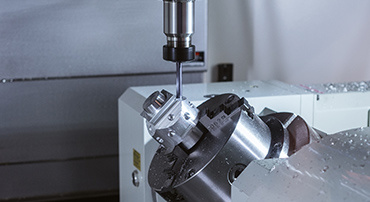29
2023
-
03
Common surface treatment processes for precision sheet metal parts
Due to the fact that some sheet metal materials themselves do not have the ability to prevent rust and corrosion, they need to undergo surface treatment to achieve their objectives
Common surface treatment processes for steel plates
Electrogalvanizing: The process of forming a uniform, dense, and well bonded metal or alloy deposition layer on the surface of a workpiece by electrolysis
Compared with other metals, zinc is a relatively inexpensive and easy to plated metal, belonging to a low value anti-corrosion electrodeposit. It is widely used to protect steel parts, especially against atmospheric corrosion, and for decoration. Plating technology includes bath plating (or hanging plating), barrel plating (suitable for small parts), automatic plating, and continuous plating (suitable for wire and strip)
According to the classification of electroplating solutions in China, they can be divided into four categories:
Cyanide zinc plating
Due to the highly toxic nature of (CN), environmental protection has imposed strict restrictions on the use of cyanide in zinc electroplating, continuously promoting the development of cyanide reduction and replacement electroplating solution systems, requiring the use of low cyanide (micro cyanide) electroplating solutions. After adopting this process for electroplating, the product quality is good, especially for color plating, and the color remains good after passivation
Zincate zinc plating
This process is evolved from cyanide zinc plating. Currently, there are two major factions in China, namely: a) Wuhan Material Protection Institute” DPE” Series; b) Radio and Television Station; DE” Series. Zincate zinc plating, which belongs to alkaline additives; The PH value is 12.5~13. Using this process, the lattice structure of the plating layer is columnar, with good corrosion resistance, and is suitable for color galvanizing
Chloride zinc plating
This process is widely used in the electroplating industry, accounting for up to 40%. After passivation (blue white), zinc can replace chromium (comparable to chromium plating). Especially after adding water-soluble varnish, it is difficult for laymen to identify whether it is galvanized or chromium plated. This process is suitable for white passivation (blue white, silver white)
Sulfate zinc plating
This process is suitable for continuous plating (wire, strip, simple, coarse, large parts, components). Low cost
The galvanization industry belongs to the pollution industry. Although widely used and low-cost, galvanization products do not meet ROHS standards, so electroplating products should be avoided in product design
Chromium plating: The process principle is the same as that of zinc plating
Compared with traditional electrogalvanizing, chromium coating has extremely strong corrosion resistance, which is 7— 10 times, and the surface is beautiful, but the cost is high
Currently, the advanced chromium plating process is called DACROMET, or Dacromet in Chinese. It is a revolutionary high-tech metal surface treatment process, with no pollution throughout
Powder spraying: The powder is polarized and uniformly adheres to the surface of the product with opposite polarity under the action of electric field force. It belongs to a physical change
Powder spraying process principle:
Electrostatic powder spraying: The main method is to polarize the coating (powder) through electrodes, and then apply opposite charges to the object to be sprayed. Under the action of the electric field force, the powder uniformly adheres to the surface of the object
Characteristics of powder spraying process:
Electrostatic powder spraying does not cause atmospheric pollution, and powder can be recycled to reduce material consumption costs. The coating film has excellent performance in acid resistance, alkali resistance, salt corrosion resistance, and high adhesion
4. Electrophoresis: Electrophoretic coatings move charged coating ions to the surface of the product under the action of the anode and cathode, and deposit to form a coating. It belongs to a chemical change
Process principle of electrophoresis:
The electrophoretic coating is applied to the cathode at both the cathode and the anode, and under the action of a voltage, the charged coating ions move to the cathode, forming an insoluble substance with the alkaline reaction generated on the cathode surface, which is deposited on the workpiece surface
Characteristics of electrophoretic surface treatment process:
Electrophoretic paint film has the advantages of plump, uniform, flat, and smooth coating, and its hardness, adhesion, corrosion resistance, impact performance, and permeability are significantly superior to other coating processes
The common electrophoretic color is black, and other colors are also available
5. Dipping: The product is heated in the molten material, and the heated metal combines with the surrounding molten material to form a certain thickness of surface material. It belongs to a physical change
Process principle of dip molding:
Metal impregnation is a new technical treatment method for corrosion prevention of metal surfaces. It is a heating process that involves preheating, dipping, and solidification of metals. During soaking, the heated metal adheres to the surrounding material. The hotter the metal, the longer the soaking time, and the thicker the material
Process characteristics of dip molding:
Related news
What are the main categories of molds
2023-03-29

Add
Rui'an Hai'an Industrial Zone, Zhejiang Province

Tel

Mobile

Fax







